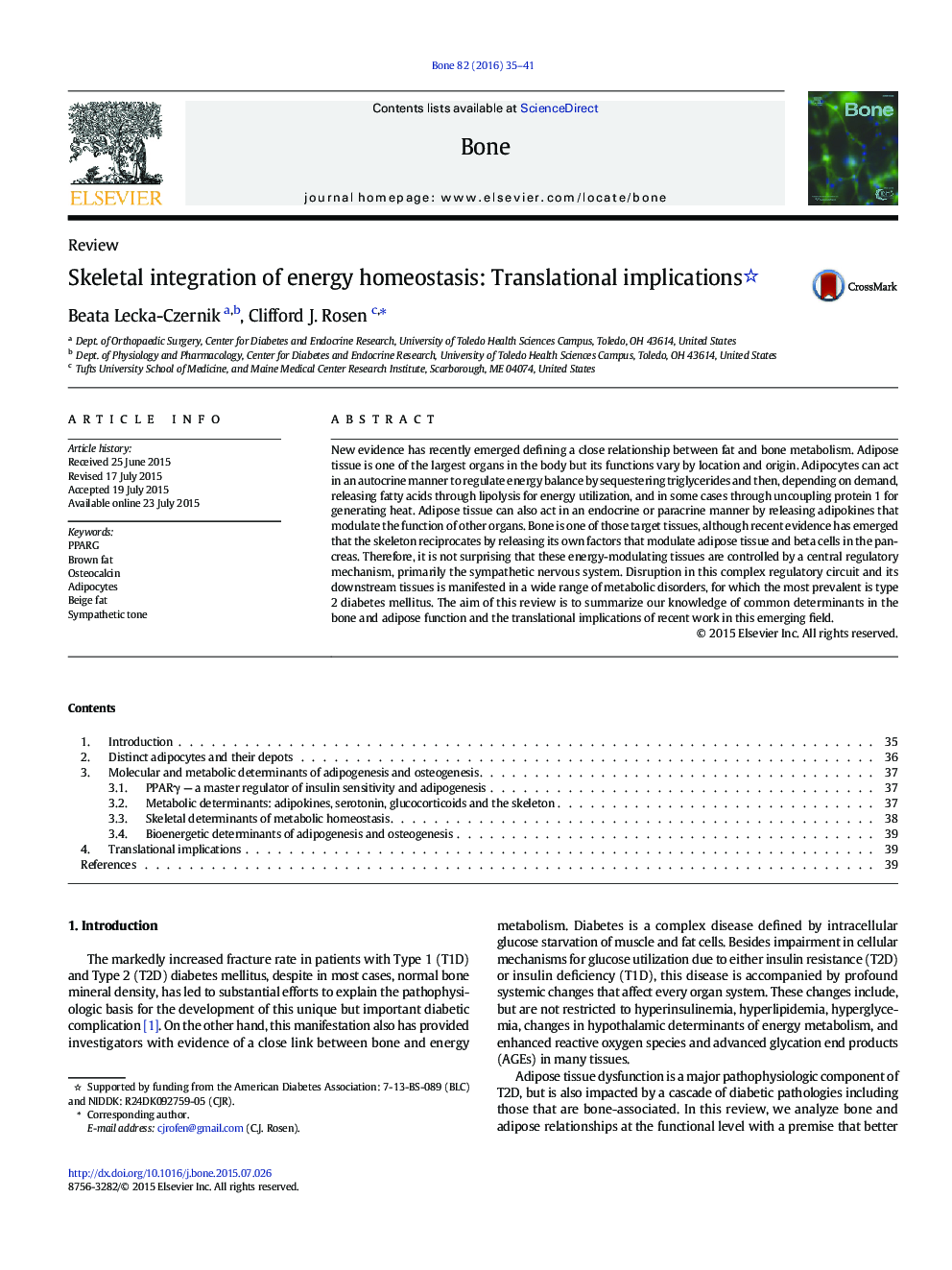| کد مقاله | کد نشریه | سال انتشار | مقاله انگلیسی | نسخه تمام متن |
|---|---|---|---|---|
| 5889086 | 1568137 | 2016 | 7 صفحه PDF | دانلود رایگان |
- Bone and energy metabolism are interconnected.
- Adipose tissue regulates bone remodeling and bone regulates insulin sensitivity in adipose tissue.
- Pparg is an important modulator of insulin sensitivity and MSC allocation.
New evidence has recently emerged defining a close relationship between fat and bone metabolism. Adipose tissue is one of the largest organs in the body but its functions vary by location and origin. Adipocytes can act in an autocrine manner to regulate energy balance by sequestering triglycerides and then, depending on demand, releasing fatty acids through lipolysis for energy utilization, and in some cases through uncoupling protein 1 for generating heat. Adipose tissue can also act in an endocrine or paracrine manner by releasing adipokines that modulate the function of other organs. Bone is one of those target tissues, although recent evidence has emerged that the skeleton reciprocates by releasing its own factors that modulate adipose tissue and beta cells in the pancreas. Therefore, it is not surprising that these energy-modulating tissues are controlled by a central regulatory mechanism, primarily the sympathetic nervous system. Disruption in this complex regulatory circuit and its downstream tissues is manifested in a wide range of metabolic disorders, for which the most prevalent is type 2 diabetes mellitus. The aim of this review is to summarize our knowledge of common determinants in the bone and adipose function and the translational implications of recent work in this emerging field.
Journal: Bone - Volume 82, January 2016, Pages 35-41
